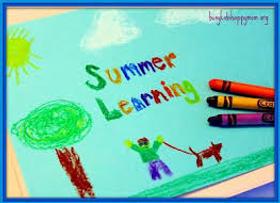In a country as diverse as the United States, where nearly 18% of the population’s native language is not English, public schools have embraced the linguistic challenge presented by immigrant students. A rising number of public schools are gaining recognition for their outstanding efforts in working with immigrant students and non-English speaking learners. In fact, according to The Statesman, ELL students across the nation have made significant gains on standardized tests over the past three years.
The ELL Concern
The English Language Learner (ELL) population in the United States has grown significantly in the last several decades. While only 9 percent of students in 1979 reportedly spoke a non-English language at home, as of 2007, 20 percent of students claimed to speak a non-English language at home.
By law, public schools are mandated to provide the appropriate language and academic support for English Language Learners (ELLs), but some school districts have failed dismally in judging test scores.
Subsequently, the U.S. Education Department Office for Civil Rights began investigating school districts accused of not meeting the rights of their immigrant students. Specifically, the Education Department is looking into California’s Los Angeles Unified School District, as only 3 percent of its ELLs have achieved a “proficient” score on their high school math and English tests. Due to this low success rate, leaders seek to “determine whether those students are being denied a fair education.”
This video looks at the marginalized nature of the ELL student population.
Light in the ELL Tunnel
While the Los Angeles Unified School District may have dismal ELL testing rates, the situation is looking brighter in other districts. When the Center on Education Policy evaluated the performance of students labeled as ELLs in 35 states nationwide, researchers found 25 states that reported significant improvement among ELL fourth graders on reading tests. Additionally, in grades four through eight, 70 percent of the evaluated states boosted their status of “proficient” scores among ELLs.
In speaking optimistically regarding the latest gains demonstrated by the nation’s ELL students, the Director of the Center on Education Policy, Mr. Jack Jennings, proclaims, “The report ought to offer some hope […] the accountability on school districts is resulting in more attention to these kids and them doing better on tests.”
States Leading the Linguistic Charge
Nationally, the four states with the largest population of immigrant students in public schools are Texas, California, Florida, and New York. All four of these states reported improvements among ELLs on various reading tests. More specifically, all four of these key states demonstrated an increase in “proficient” test scores in every grade level and subject combination.
In Texas, data shows that 56 percent of ELLs in all grade levels met or exceeded the standards for passing the Texas Assessment of Knowledge and Skills (2009). Incredibly, this rise in success shows a significant increase, as only 52 percent passed this standardized test in 2008, while only 45 percent passed in 2006.
This video offers an overview of the ELL population and its needs.
Newcomers High School: A Shining ELL Example
While immigrant students nationwide show academic strides, some schools are gaining significant recognition for their remarkable student success rates. As CNN reports, Newcomers Public High School, located in Long Island City in Queens, New York, is demonstrating its progress as “the miracle […] in the hallways.”
Newcomers High School devotes itself to teaching immigrant students who have lived in the United States for one year or less. As a result, half of the students arrive from Latin American countries, one quarter arrives from China, and the remaining student population has arrived from various other countries worldwide.
At Newcomers High School, immigrant and ELL students who struggled to pronounce even basic English words in their Level 1 language classes have demonstrated miraculous progress over the span of several months. Oftentimes, students have shifted from minimal English skills to speaking conversationally over the course of one semester.
One student, for example, arrived in the United States from Mexico just three years before his anticipated high school graduation date. After graduating from Newcomers this June, the student will attend the prestigious Lawrence University with a full scholarship.
This one student, however, is not just one rare example. According to data, although nearly all Newcomer students are English language learners, 90 percent of graduating seniors continue to attend college. Undoubtedly, such progress has helped Newcomers earn its rank as the 6th top school in the US World and News Report’s list of the best 100 schools of 2009.
With the right support and academic environment, ELL students can quickly obtain English skills and achieve the academic version of the American dream.
Questions? Contact us on Facebook. @publicschoolreview













































































